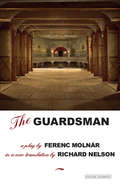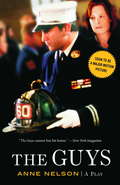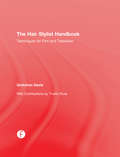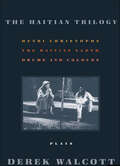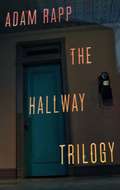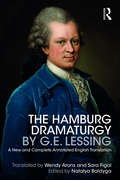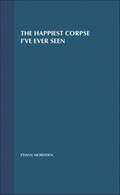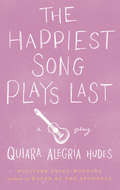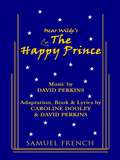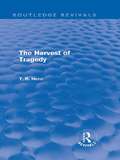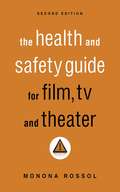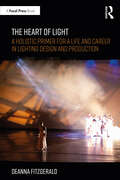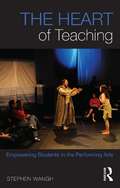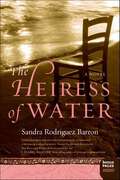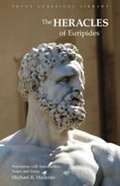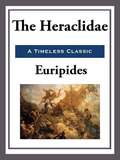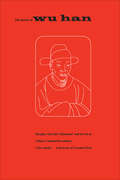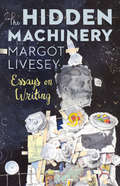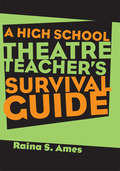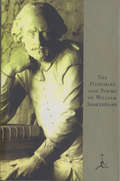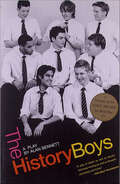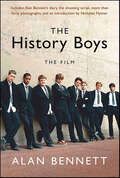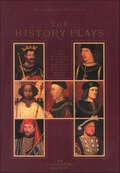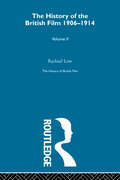- Table View
- List View
The Guardsman: A Play
by Richard NelsonThe hilarious and essential new translation of a classic by Tony award-winning playwright Richard Nelson Budapest’s most beautiful young actress is notorious for affairs that only last six months. When she finally marries, she chooses the city’s most handsome and talented young actor. Five and a half months later, suspecting his new wife is getting restless, the actor takes on his most daring role yet—disguising himself as a dashing Emperor’s guardsman—to test her fidelity and win her love. But the more he woos his wife as this guardsman, the more insanely jealous he gets of the character he feels compelled to play. This new translation by Richard Nelson is sharp, funny, and perhaps calls to mind that other psychodrama about a stormy marriage, Who's Afraid of Virgina Woolfe?
The Guys
by Anne NelsonTHE STORY: Less than two weeks after the September 11th attacks, New Yorkers are still in shock. One of them, an editor named Joan, receives an unexpected phone call on behalf of Nick, a fire captain who has lost most of his men in the attack. He's looking for a writer to help him with the eulogies he must present at their memorial services. Nick and Joan spend a long afternoon together, recalling the fallen men through recounting their virtues and their foibles, and fashioning the stories into memorials of words. In the process, Nick and Joan discover the possibilities of friendship in each other and their shared love for the unconquerable spirit of the city. As they make their way through the emotional landscape of grief, they draw on humor, tango, the appreciation of craft in all its forms-and the enduring bonds of common humanity. THE GUYS is based on a true story.
The Hair Stylist Handbook: Techniques for Film and Television
by Gretchen DavisAchieve professional quality hair results with this full-color, comprehensive book from award-winning hair and makeup pros, Gretchen Davis and Yvette Rivas. In The Hair Stylist Handbook: Techniques for Film and Television, you’ll learn how to create that sought-after "complete look" by learning the newest hair techniques that are in demand on film and television sets. Learn how to break into the industry, what products to use to achieve specific effects, how to maintain a look throughout the day, what quick techniques to use to achieve certain textures, and much more. With input from hairstylist Yvette Rivas, this step-by-step guide makes complex techniques clear, allowing you to achieve the most coveted results. In this informative handbook you will find: An extensive chapter on men’s grooming techniques and hair products Specific techniques for dramatic and long lasting hair color Lists of the best hair tools and instructions for how to use them to achieve different looks Information about how production schedules, cast, and crew are all affected and influenced by the hair and makeup team Details on how to run a successful and organized hair and makeup trailer on set Whether you are a professional in the field, or a student looking to break in to the industry, this book will provide you with secrets and information that you cannot find anywhere else.
The Haitian Trilogy: Plays
by Derek WalcottThree plays by the Nobel-laureate Derek Walcott, brought together for the first time in The Haitian TrilogyIn the history plays that comprise The Haitian Trilogy--Henri Christophe, Drums and Colours and The Haytian Earth--Derek Walcott, recipient of the Nobel Prize in Literature, uses verse to tell the story of his native West Indies as a four-hundred-year cycle of war, conquest and rebellion.In Henri Christophe and The Haytian Earth, Walcott re-casts the legacy of Haiti's violent revolutionaries--led by Toussaint L'Ouverture, Jean Jacques Dessalines and Henri Christophe--whose rebellion established the first black state in the Americas, but whose cruelty becomes a parable of racial pride and corruption. Drums and Colours, commissioned in 1958 to celebrate the first parliament in Trinidad, is a grand pageant linking the lives of complex, ambiguous heroes: Columbus and Raleigh; Toussaint; and George William Gordon, a martyr of the constitutional era.From Henri Christophe's high style to the bracing vernacular of The Haytian Earth, to the epic scale and scope of Drums and Colours, in these plays Walcott, one of our most celebrated poets, carved a place in the modern theater for the history of the West Indies, and a sounding room for his own maturing voice.
The Hallway Trilogy
by Adam Rapp"Rapp remains a true man of the theater and a potent writer."--Time Out "To watch The Hallway Trilogy by Adam Rapp is to enter an alternate universe . . . a carnival of the desperate, the grotesque, the outrageous."--The New York Times "I knew in a single sentence that Adam was a writer the world was going to listen to for as long as he felt like writing. . . . Adam writes like nobody else, his fierce poetic power as inescapable as the doom that waits for his characters. The work is bleak and true, his touch that of a master in the making."--Marsha Norman Multi-talented artist and provocateur Adam Rapp shocks and disturbs, weaving themes of love, suffering, and redemption throughout this alarming yet heartening critical examination of societal change. Spanning one hundred years in one Lower East Side tenement hallway, this series of connected plays--Rose, Paraffin, and Nursing--is a dark and compelling exploration of what binds people together and drives them apart. Packed with searing dialogue and harrowing narratives, The Hallway Trilogy "bristles with humor" and "contains some of Rapp's most sensitive and mature writing" (The New York Times). Adam Rapp is a novelist, filmmaker, and an OBIE Award-winning playwright and director. His plays include the Pulitzer Prize finalist Red Light Winter, Nocturne, Stone Cold Dead Serious, Finer Noble Gases, Essential Self-Defense, and more. He is the author of many young adult novels such as Punkzilla, The Buffalo Tree, and Under the Dog, and the writer and director of the film Winter Passing, starring Zooey Deschanel, Will Ferrell, and Ed Harris.
The Hamburg Dramaturgy by G.E. Lessing: A New and Complete Annotated English Translation
by Natalya BaldygaWhile eighteenth-century playwright and critic Gotthold Ephraim Lessing made numerous contributions in his lifetime to the theater, the text that best documents his dynamic and shifting views on dramatic theory is also that which continues to resonate with later generations – the Hamburg Dramaturgy (Hamburgische Dramaturgie, 1767–69). This collection of 104 short essays represents one of the eighteenth century’s most important critical engagements with the theater and its potential to promote humanistic discourse. Lessing’s essays are an immensely erudite, deeply engaged, witty, ironic, and occasionally scathing investigation of European theatrical culture, bolstered by deep analysis of Aristotelian dramatic theory and utopian visions of theater as a vehicle for human connection. This is the first complete English translation of Lessing's text, with extensive annotations that place the work in its historical context. For the first time, English-language readers can trace primary source references and link Lessing’s observations on drama, theory, and performance not only to the plays he discusses, but also to dramatic criticism and acting theory. This volume also includes three introductory essays that situate Lessing’s work both within his historical time period and in terms of his influence on Enlightenment and post-Enlightenment theater and criticism. The newly translated Hamburg Dramaturgy will speak to dramaturgs, directors, and humanities scholars who see theater not only for entertainment, but also for philosophical and political debate.
The Happiest Corpse I've Ever Seen (The History of the Broadway Musical)
by Ethan MorddenFor Ethan Mordden, the closing night of the hit musical, 42nd St. sounded the death knell of the art form of the Broadway musical. After that, big orchestras, real voices, recognizable books and intelligent lyrics went out the window in favor of cats, helicopters, yodeling Frenchmen, and the roof of the Paris Opera. Mordden takes us through the aftermath of the days of the great Broadway musical. From the long-running Cats to Miss Saigon, Phantom, and Les Miserables, to gems like The Producers, he is unsparing in his look at the remains of the day. Not content to scold the shows' creators, Mordden takes on the critics, too, splaying their bodies across the Great White Way like Sweeney Todd giving a close shave. Once more, it's "curtain going up," but Mordden is not applauding.
The Happiest Song Plays Last
by Quiara Alegría Hudes"As ever, Hudes's writing is poetic but wry, full of swagger and poetry. There's live music, but oh, how the lines sing too." - David Cote, Time Out New York"Ms. Hudes draws all her characters with precision and understanding... this warm-blooded play underscores how the disorienting flux of life can be navigated with the help of carefully tended family ties." - Charles Isherwood, New York Times"Delightful... Hudes is a very accomplished storyteller, a playwright with an emergent, fulsome American narrative." - Chris Jones, Chicago TribuneAt the dawn of the Arab Spring in an ancient Jordanian town, an Iraq War veteran struggles to overcome the traumas of combat by taking on an entirely new and unexpected career: an action-film hero. At the same time, halfway around the world in a cozy North Philadelphia kitchen, his cousin takes on a heroic new role of her own: as the heart and soul of her crumbling community, providing hot meals and an open door for the needy.The final installment in Hudes's three-play cycle, which began with Pulitzer Prize-finalist Elliot, A Soldier's Fugue and Pulitzer Prize-winner Water by the Spoonful, The Happiest Song Plays Last is about the search for redemption, humility and one's place in the world.Quiara Alegría Hudes wrote the book for the Broadway musical In the Heights, which received the 2008 Tony Award for Best Musical, a Tony nomination for Best Book of a Musical, and was a Pulitzer Prize finalist. Hudes is on the board of Philadelphia Young Playwrights, which produced her first play in the tenth grade. She now lives in New York with her husband and children.
The Happy Prince
by Caroline Dooley16 principals, chorus / Unit Set / A touching musical based on the well-loved story by Oscar Wilde...the golden statue of the Happy Prince stands high above the city looking down on the misery and poverty beneath him. Desperate to bring hope and happiness to the poor people, he asks a swallow to distribute his gold and jewels to them. The generosity of the Happy Prince and the courage of the swallow help to overcome the greed of the powerful mayor and we are shown that the most precious things in life are often the least obvious.
The Harvest of Tragedy (Routledge Revivals)
by Thomas Rice HennUpon initial publication in 1956, this book was an attempt to re-state certain problems concerning the aesthetics and ethics of the tragic form; to examine these in relation to contemporary work in psychology and anthropology; to enquire into the significance of ‘the fact or experience called tragedy’ in the modern world; and to suggest a synthesis in terms of the Christian tradition. This is a reissue of the corrected second edition of the work, first published in 1966.
The Haunting of Lin-Manuel Miranda
by Ishmael Reed&“That&’s a lot of horse hockey, Hamilton.&” Described by the New York Times as &“classic activist theater&” and &“a cross between &‘A Christmas Carol&’ and a trial at The Hague&’s International Criminal Court.&” "In this, his latest work, the protean Ishmael Reed--the legendary artist and prolific writer--continues to burnish his already sterling reputation by dismantling the 'Creation Myth' of the founding of the U.S., as represented in the incredibly profitable play and musical, Hamilton. Reed, a verbal acrobat of global renown, demonstrates here why he is widely considered to be the leading intellectual in the U.S. today." -Gerald Horne, author of The Counter-Revolution of 1776: Slave Resistance and the Origins of the USA This powerful play, originally produced at the Nuyorican Poets Café, comprehensively dismantles the phenomenon of Lin-Manuel Miranda and Hamilton. Reed uses the musical&’s crimes against history to insist on a radical, cleareyed way of looking at our past and our selves. Both durable and timely, this goes beyond mere corrective – it is a meticulously researched rebuttal, an absorbing drama, and brilliant rallying cry for justice. The perfect tie-in to both the success of and backlash to Hamilton, it is the major voice in contrast to the recent movie. It captures both the earnest engagement that fans of the musical desire, as well as the exhausted disbelief of those who can&’t stand it. Teachers, students and fans of drama, literature, and history will find much to love. It is written by one of America&’s most respected and original writers, who is eagerly promoting it, and who is long overdue for a renaissance.
The Health & Safety Guide for Film, TV & Theater, Second Edition
by Monona RossolThis second edition has been expanded and updated to address new hazards, unique health and safety problems, and particular regulations that threaten anyone working in the entertainment industries today. Artists' advocate Monona Rossol exposes the hazards of theatrical paints, theatrical makeup, pigments, dyes, plastics, solvents, woodworking, welding, asbestos, fog, and offers practical solutions to these dangers. No one working in the performing arts can afford to skip this handbook packed with life-or-death health and safety information.
The Heart of Light: A Holistic Primer for a Life and Career in Lighting Design and Production
by Deanna FitzgeraldThe Heart of Light: A Holistic Primer for a Life and Career in Lighting Design and Production is a fresh look into the ever-evolving fields of lighting design and technology for arts and entertainment. Full of practical information, historic perspectives, engaging projects, and opportunities for deep inquiry, practice, and reflection, this book offers a well-rounded foundation in the art, technology, and industries of light. It explores a wide range of topics, including: how to observe, communicate about, and use light effectively how quietive practices can deepen the creative process current lighting equipment used across the various arts and entertainment industries and strategies for keeping up with its rapid innovation how to choose a career path that keeps you inspired, as well as ways to search for work with dos and don’ts of effective career building how to cope with and celebrate the unknown and related challenges of implementing a design under pressure considerations for using self-reflection to be successful and impact positive change From her perspective of lighting designer, educator, and contemplative practitioner, the author explores lighting not just as subject, but as an invitation to a fulfilling lifelong adventure. Written for students of Theatrical Lighting courses and emerging lighting professionals, The Heart of Light is a must-read for anyone intrigued by the power of light.
The Heart of Teaching: Empowering Students in the Performing Arts
by Stephen WanghThe Heart of Teaching is a book about teaching and learning in the performing arts. Its focus is on the inner dynamics of teaching: the processes by which teachers can promote—or undermine—creativity itself. It covers the many issues that teachers, directors and choreographers experience, from the frustrations of dealing with silent students and helping young artists ‘unlearn’ their inhibitions, to problems of resistance, judgment and race in the classroom,. Wangh raises questions about what can—and what cannot—be taught, and opens a discussion about the social, psychological and spiritual values that underlie the skills and techniques that teachers impart. Subjects addressed include: Question asking: which kinds of questions encourage creativity and which can subvert the learning process. Feedback: how it can foster both dependence and independence in students. Grading: its meaning and meaninglessness. Power relationships, transference and counter-transference The pivotal role of listening. The Heart of Teaching speaks to experienced teachers and beginning teachers in all disciplines, but is particularly relevant to those in the performing arts, from which most of its examples are drawn. It brings essential insight and honesty to the discussion of how to teach.
The Heiress of Water: A Novel
by Sandra Rodriguez BarronWhen young Monica Winters Borrero loses her luminous mother in an accident at sea, she is exiled from the tropical paradise that was her home. Grieving and cut off from a life among El Salvador's elite, Monica and her American father move to Connecticut, vowing never to look back.Years later, an intriguing stranger, who has endured a terrible loss of his own, enters Monica's life, bearing an unusual request. Monica is propelled back to her lost world, retracing the shadowy last days of her mother, a marine scientist who had been on the brink of understanding the therapeutic applications of a rare, venomous sea creature. Now, her research is being corrupted by a secret clinic that claims the power to restore consciousness to the comatose.What Monica discovers will shatter the family's delicate truce with the past, and compel everyone involved to challenge their deepest notions of what it means to be alive. Atmospheric, thought-provoking, and timely. The Heiress of Water is a stunning parable of paradise lost and found.
The Heracles of Euripides (Focus Classical Library)
by Eurípides Michael R. HalleranThis is an English translation of Euripides' tragedy Heracles on how Heracles is maddened by the gods to murder his wife and children.
The Heraclidae
by EuripidesThe theme of the Heraclidae is how the children of Heracles, under the care of Iolaus and Alemena, were driven from city to city throughout Greece, fleeing the wrath of Eurystheus, king of Argos, who hated them for their father's sake.
The Heresy of Wu Han: His play 'Hai Jui's Dismissal' and its role in China's Cultural Revolution
by Clive AnsleyAt the centre of China's Cultural Revolution in its first stages stands the ambiguous figure of Wu Han. Occupying until the mid-sixties a favoured position among the intellectual elite of the People's Republic, he was the eighth-ranking figure in the Chinese Communist Party, and his Peking Opera Hai Jui's Dismissal was performed all over China. Gradually it became apparent that Wu Han was using Hai Jui to lampoon Chairman Mao Tse-tung and the core policies of the CPP. Other dissidents began to pen articles and plays on similar themes. For several years Mao chafed under these literary attacks, but in late 1965 he retaliated. A sudden, scathing attack on Wu Han and his play by an obscure newspaper editor marked the beginning of the Cultural Revolution, a cataclysm in which the Party leadership was decimated while Mao regained full supremacy. This volume presents the first translation of Wu Han's plays and helps to clarify the obscure origins of a national phenomenon that was at once intellectual, social, and political.
The Hidden Machinery: Essays On Writing
by Margot LiveseyA masterclass for those who love reading literature and for those who aspire to write it. “Read everything that is good for the good of your soul. Then learn to read as a writer, to search out that hidden machinery, which it is the business of art to conceal and the business of the apprentice to comprehend.” In The Hidden Machinery, critically acclaimed and New York Times bestselling author Margot Livesey offers a masterclass for those who love reading literature and for those who aspire to write it. Through close readings, arguments about craft, and personal essay, Livesey delves into the inner workings of fiction and considers how our stories and novels benefit from paying close attention to both great works of literature and to our own individual experiences. Her essays range in subject matter from navigating the shoals of research to creating characters that walk off the page, from how Flaubert came to write his first novel to how Jane Austen subverted romance in her last one. As much at home on your nightstand as it is in the classroom, The Hidden Machinery will become a book readers and writers return to over and over again.
The High School Theatre Teacher's Survival Guide
by Raina S. AmesA reference for high school theatre teachers covering both curricular and extracurricular problems – everything from how to craft a syllabus for a theatre class to what to say to parents about a student's participation in a school play.
The Histories and Poems of Shakespeare
by William ShakespeareThis Modern Library edition presents all ten histories--each complete and unabridged--in the Shakespearean canon, along with notes and glossary. Here are: King John Richard II Henry IV, Part I Henry IV, Part II Henry V Henry VI, Part I Henry VI, Part II Henry VI, Part III Richard III Henry VIII Included also are the Bard's great narrative poems: Venus and Adonis and The Rape of Lucrece, the two works that first established Shakespeare's reputation, plus all 154 of his sonnets. Presented as well are A Lover's Complaint, The Passionate Pilgrim, and The Phoenix and the Turtle.
The History Boys: A Play
by Alan Bennett"A play of depth as well as dazzle, intensely moving as well as thought-provoking and funny." —The Daily TelegraphIn The History Boys, Alan Bennett evokes the special period and place that the sixth form represents in an English boy's life. In doing so, he raises—with gentle wit and pitch-perfect command of character—not only universal questions about the nature of history and how it is taught but also questions about the purpose of education today.An unruly bunch of bright, funny sixth-form (or senior) boys in a British boys' school are, as such boys will be, in pursuit of sex, sport, and a place at a good university, generally in that order. In all their efforts, they are helped and hindered, enlightened and bemused, by a maverick English teacher who seeks to broaden their horizons in sometimes undefined ways, and a young history teacher who questions the methods, as well as the aim, of their schooling.Winner of six Tony Awards, The History Boys was also made into a movie of the same name in 2006.
The History Boys: The Film
by Alan BennettNow a major motion picture from Fox Searchlight Pictures, The History Boys: The Film contains Alan Bennett's diary of the filming, the shooting script, and an introduction by director Nicholas Hytner, as well as an extensive plate section that includes a look behind the scenes and stills from the film.An unruly bunch of bright, funny sixth-form (or senior) boys in a British boys' school are, as such boys will be, in pursuit of sex, sport, and a place at a good university, generally in that order. In all their efforts, they are helped and hindered, enlightened and bemused, by a maverick English teacher who seeks to broaden their horizons in sometimes undefined ways, and a young history teacher who questions the methods, as well as the aim, of their schooling. In The History Boys, Alan Bennett evokes the special period and place that the sixth form represents in an English boy's life. In doing so, he raises not only universal questions about the nature of history and how it is taught but also questions about the purpose of education today.
The History Plays: An Illustrated Edition
by William ShakespeareIt is part of Shakespeare's extraordinary contribution to our culture that, through his dramas based on English history, he played a unique part in forming our view of ourselves and our nationhood. From King John, in which through Magna Carta the king's absolute power was first limited and the people's freedoms assured, to--almost in his own lifetime--Henry VIII, Shakespeare wrote a series of ten plays portraying the course of history. It represents almost one third of his entire dramatic output.The overarching theme of these plays is the vital importance of the sovereign's legitimacy if the nation is to be stable. They cover revolutionary times and events--the deposition and murder of Richard II, the Wars of the Roses, the usurping of the throne by Richard III--but they always affirm the principle that a legitimate king, circumscribed by an agreed constituion, is the only proper guarantee of the nation's liberties. There are many other ways in which Shakespeare's patriotism has become definitive. In Henry V's St. Crispin's Day speech to the troops before Agincourt, for example, or John of gaunt's 'scepter'd isle' speech, a sense of Englishness is expressed which still lives in English minds today. The E;izabethan's pride in nationhood was perfectly embodied by Shakespeare, but the poetry of it transcends its own time. In this edition the history plays are brought together with a large group of illustrations which echo and amplify their themes. Gloriously vivid images of England's story are presented here, putting the great plays in a magnificent setting.
The History of British Film (Volume 2): The History of the British Film 1906 - 1914
by Rachael LowThis set is one of the cornerstones of film scholarship, and one of the most important works on twentieth century British culture. Published between 1948 and 1985, the volumes document all aspects of film making in Britain from its origins in 1896 to 1939.Rachael Low pioneered the interpretation of films in their context, arguing that to understand films it was necessary to establish their context. Her seven volumes are an object lesson in meticulous research, lucid analysis and accessible style, and have become the benchmark in film history.
